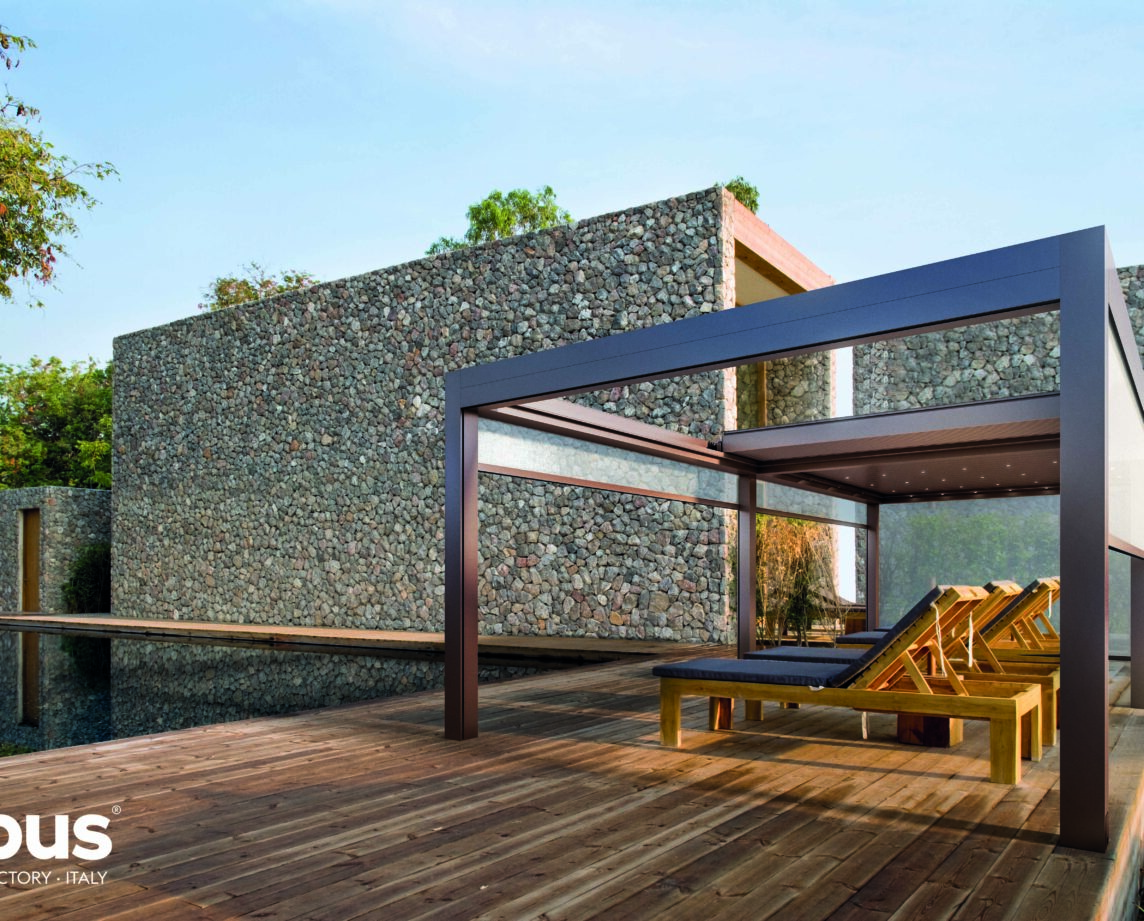Velvet Plus by Gibus
Design, versatility and high technology characterise this new line of bioclimatic pergolas with retractable blades, conceived to live in the sunlight by choosing, at any time, the degree of brightness to be surrounded by.
The bioclimatic pergolas with retractable blade cover are moved by a motorized system. In the Sway model, the blades rotate from their closing position and compact in a small space in just one single movement so that the light can filter through the roof. Thanks to the Velvet Motion patent in the Velvet and Velvet Plus models, the blades can rotate according to both the sun’s position and a variable angle from 0° to 85°, creating a comfortable microclimate, or they can be completely retracted in order to open the roof and see the sky. When the blades are closed because of rain, the waste water is conveyed to the rain downspouts which are integrated in the posts.
The Velvet Plus is a modular bioclimatic pergola with adjustable and retractable blade cover in powder coated extruded aluminium, and is available in a free-standing or leaning version. Velvet Plus has two grades of blade opening: the blades can rotate according to the sun’s position or be completely retracted and let the cover open to see the sky. The structure fully integrates the Zip roll-up closures inside the profiles, combining functional performance with minimalism of the lines. Another unique feature is the option to install glass windows on the sides, which are useful in the cooler months, as well as shading screen sheets that are indispensable in the summer.
Velvet Motion
Gibus’ patented Velvet Plus blade movement system, which allows the blades to rotate according to the orientation of the sun, at an angle varying from 0° to 85°, creating a comfortable microclimate and exposing as much or as little of the sky above as you like.
Side Seal
This patent describes the perimetral sealing system of the blades, resting on a seal along the internal border and guaranteeing perfect insulation from the external environment. In addition, each blade, along its entire length, has a seal that the adjacent blade rests on when closing, guaranteeing that water and air cannot get into the structure.


